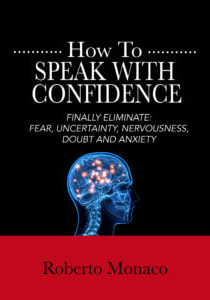How to be understood better
Dear Doc,
When you give a presentation, do you tend to dump all the information on your audience at once?
This can be overwhelming and lead to your audience tuning out.
Your audience won’t be able to process all the information and they’ll miss key points.
A recent study found that people can only process about 60 bits of information per second. Which is like …a tweet!
That’s why it’s important to present information in small, manageable chunks.
The brain can process only a small amount of information at a time consciously, that is. (Unconsciously, however, we can take in a lot more information.)
It is interesting to note that when people are shown a list of items and then asked to remember them, they will often group the items into smaller chunks.
For example, if presented with the list “1, 4, 7, 2, 5, 8” people will often remember it as “1, 4, 7 / 2, 5, 8”.
This chunking of information into manageable pieces is something that our brains do automatically and it helps us to process information more effectively.
So, when you are presenting content, keep in mind that people will have an easier time understanding and remembering it if it is presented in small chunks.
(the estimate is that people can remember 7 +/- 2 items at a time – so keep your lists and presentations to around 7 items or less)
One mistake that presenters make is giving too much information all at once.
USE PROGRESSIVE DISCLOSURE
Progressive disclosure means providing information gradually, a little bit at a time.
When you do this, your audience can digest the information more easily and retain it better.
For example, if you’re giving a presentation on a new product, don’t try to explain every feature all at once.
Instead, focus on the most important features first and then provide additional details later.
At one presentation I attended, the speaker started by saying, “This product is going to change your life!”
We were all intrigued, of course.
But then he proceeded to list every single feature of the product in excruciating detail!
By the end of his presentation, we were all exhausted and none of us could remember a single thing he’d said.
Instead…
SHOW ONLY ONE PIECE OF INFORMATION AT A TIME
When you’re presenting information, it’s important to show only one piece of information at a time.
For example, if you’re showing a slide with a graph on it, don’t also try to explain what the graph is about verbally. The audience will just get confused.
Instead, show the graph, remove it out of site-of-view and then explain it verbally.
If you’re showing a video, pausing it periodically to explain what’s happening will help the audience to understand and remember the content better.
BITE-SIZED CHUNKS:
When you are presenting content, keep in mind that people will have an easier time understanding and remembering it if it is presented in small chunks.
So, try to chunk your content into manageable pieces and present one piece at a time.
This is the technique that we teach in our Influencing from the front seminars.
Our presentation structures uses “chunks” which are like mini-presentations within the overall presentation.
Each chunk contains one main message.
This allows the audience to digest the information more easily and retain it better.
Plus, it keeps them engaged because they know that there is a logical end to each section and they can see your progress as you move through the presentation.
So, when you’re preparing your next presentation, think about how you can break it down into bite-sized chunks.
It will make a world of difference to your audience!
In summary, when giving presentations or lists of information, it is best to keep the information in small, manageable chunks. Our brains have a difficult time processing large amounts of information all at once, so by chunking the information, we can make it easier for our audiences to understand and remember. Additionally, it is helpful to show only one piece of information at a time (e.g., one slide in a PowerPoint presentation). This allows the audience to focus on and better understand the individual piece of information before moving on.
Key takeaways:
– People process information more effectively in small, bite-sized chunks.
– When giving presentations or lists of information, it is best to keep the information in small, manageable chunks.
– It is helpful to show only one piece of information at a time (e.g., one slide in a PowerPoint presentation). This allows the audience to focus on and better understand the individual piece of information before moving on.
– Progressive disclosure (providing information gradually, a little bit at a time) is an effective way to present information to an audience.
Speak soon,
Roberto

Free ebook shows you how to speak with confidence. Get rid of completely or reduce SIGNIFICANTLY your fear of speaking in front of people.

How do you prefer to learn?
We have an option that's just right for you
1 on 1
Private coaching for those who prefer to have personalized attention.
Discover More
Seminar
Group seminars for those who prefer an immersion experience...
More Info
Online
Online training for those who prefer to work at their own pace.
Access site